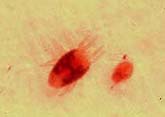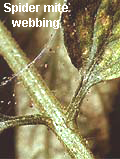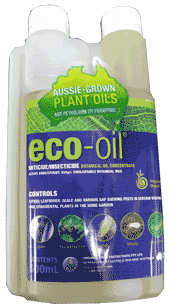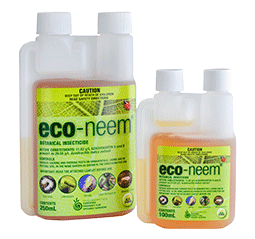| Organic Seeds | Edible Plants | Organic Pest Controls | Books | Tools, Propagation & Fertilisers | Sprouting & Microgreens | Poultry Supplies | Specials & Gift Ideas |

Top

We will send an email to this address*
when is next available
* we will use this email address only for this notification and then we will delete it.
 Home
Home
Green Harvest Organic Gardening Supplies is permanently closed as of 5pm on 1-11-2023.
We will not be taking orders by this website, in person, by phone or email. Our display garden and retail shop are closed forever.
Read more...
Phone:07 54357000
Phone calls will only be responded to sporadically and only in reference to orders placed prior to 2-11-2023. All the useful growing and organic pest management research and resources are available on this website for a while still.
 The two-spotted mite or spider mite Tetranychus urticae is a tiny creature (about the size of a full stop)
that damages plants by feeding on the chlorophyll in leaves. The mite is yellow-green with two large, dark spots
on its back. In autumn it turns reddish-orange, hence its other common name, red spider.
The two-spotted mite or spider mite Tetranychus urticae is a tiny creature (about the size of a full stop)
that damages plants by feeding on the chlorophyll in leaves. The mite is yellow-green with two large, dark spots
on its back. In autumn it turns reddish-orange, hence its other common name, red spider.The first sign that your plants are under attack is usually a white spotting on the surface of the leaves. In heavy infestations, the mites remove nearly all the chlorophyll and the leaves turn yellow and drop off. Similar symptoms - but with the addition of black marks on the underside of leaves - are more likely to be thrips.
Two-spotted mite feeds on a wide range of plants, particularly cucumbers, tomatoes, capsicums, beans, roses, orchids, strawberries, berry fruits, apples and peaches.
Suggested Organic Strategies:
- Common organic practices such as making compost, mulching the soil and avoiding chemical insecticides help to encourage predatory mites, a major predator of two-spotted mite. A healthy garden will have a resident population of predatory mites to keep pest mites under control.
- Try a high pressure hosing in the early morning, 3 days in a row.
- An unlikely pest control device is a hand-held vacuum cleaner! After vacuuming, tip the contents immediately into a plastic bag and place in the freezer for a few hours.
- Keep your plants healthy by feeding, mulching and watering.
Organic Strategies for Two-Spotted or Spider Mite Control © Frances Michaels
 With their common use of compost and mulch, organic gardeners have a head start in the control of this
chlorophyll-munching mite.
With their common use of compost and mulch, organic gardeners have a head start in the control of this
chlorophyll-munching mite.
Mites secrete a very fine, silk-like webbing which protects them from enemies and chemical sprays. When large populations have been present for a few weeks, webbing may cover the whole plant. Females leave plants via threads of webbing blown on the wind, or they may drop off a plant and crawl to a new plant. Female two-spotted mites over-winter in the soil under leaf litter, tree bark, or cracks in greenhouse walls, emerging in late spring to lay eggs. At a temperature of 30°C their life cycle can be completed in 8 days, giving 12 to 20 generations over summer. Mite numbers build fastest in hot, dry weather with low humidity.
Biological Controls
Organic gardeners have an advantage regarding spider mite control. Common organic practices such as making compost, mulching the soil and avoiding chemical insecticides help to encourage predatory mites, a major killer of two-spotted mite. A healthy garden will have a resident population of predatory mites to keep pest mites under control. Predatory mites are abundant in the top layers of soil, in humus and animal manures.
Two types pf predatory mites are available commercially from www.goodbugs.org.au - Phytoseiulus persimilis and Typhlodromus occidentalis. They are best introduced when pest numbers are low.
Phytoseiulus persimilis are available from: Bioworks (NSW); Biomites (Qld); Manchil IPM Services (WA);
and as part of the OCP Backyard Buddies range.
Typhlodromus occidentalis are available from Biological Services (SA).
Typhlodromus occidentalis are available from Biological Services (SA).
Gardeners who commonly spray insecticides to control caterpillars and other pests risk killing off the natural enemies present, as predatory mites are very susceptible to pesticides. Research has also shown that certain insecticides stimulate mite reproduction, so the gardener may have controlled one pest only to find that the population of a much more serious pest, the two-spotted mite, has exploded. In this case, the organically acceptable caterpillar control, Bt ( Dipel), would have been a much better choice as it would have not affected the beneficial predator at all.
 Physical and Cultural Controls
Physical and Cultural ControlsThere are some easy things you can do that will have a big impact on spider mite numbers, keeping in mind that spider mites prefer high temperatures, low humidity and dusty conditions.
- Try a high pressure hosing in the early morning - three days in a row.
- Hosing plants mid-season to remove dust on the leaves helps too.
- An unlikely pest control device is a hand held vacuum cleaner! After vacuuming, tip the contents immediately into a plastic bag and place in the freezer for a few hours. You can control whiteflies doing this as well.
- Pruning affected plants and removing infested leaves will reduce pest numbers.
- Try to control weeds that harbour the pest such as plantains, black nightshade and marshmallow.
- Keep your plants healthy by feeding, mulching and watering.
Two-spotted mites are not insects and are highly resistant to many chemical insecticides. There are several organic controls that work well, as their mode of control differs from that of a chemical insecticide. Mites are mostly found under the leaves, so spray and coat this area particularly well. Due to the very fast development time of this pest, especially during warm weather when eggs are laid continuously, it is important to carry out repeat spraying if recommended.
- Potassium soap sprays such as Natrasoap or Nature's Way Vegie and Herb Spray are a good choice of control for the home gardener. Soap sprays work by blocking the mite's breathing pores and dissolving its outer covering, resulting in dehydration. They are considered very safe for the environment.
- A horticultural oil such as Eco-Oil can be very effective in smothering the mites and mite eggs. Avoid using it at temperatures higher than 35°C as it may cause leaf burn. A follow-up spray 3-5 days after the initial spray application is usually needed. Eco-Oil is certified organic, made from botanical oils and has an enhanced formulation which helps to attract beneficial insects to the garden.
- Neem is a botanical insecticide made from extracts of the neem tree. Eco-Neem is a registered organic spray that controls a wide range of insects and mites including spider mite. It works in multiple ways with the two main actions being suppression of insect appetite (they starve to death) and restricting growth (unable to moult successfully). It is approved in Australia for use on ornamental plants only.
- Wettable sulphur or dusting sulphur can only be used in cool weather, or it will cause leaf burn. You should avoid using an oil product for at least a month after applying sulphur because in combination it can cause phytotoxic problems for plants.

Suggested Products:
Eco-Oil
Eco-Neem
Natrasoap
Pyrethrum
 Home
Home
Green Harvest Organic Gardening Supplies is permanently closed as of 5pm on 1-11-2023.
We will not be taking orders by this website, in person, by phone or email. Our display garden and retail shop are closed forever.
Read more...
Phone:07 54357000
Phone calls will only be responded to sporadically and only in reference to orders placed prior to 2-11-2023. All the useful growing and organic pest management research and resources are available on this website for a while still.
No liability will be accepted by Green Harvest, its owners or employees as to the accuracy of any information. No responsibility will be taken for damage to property or persons due to information given about a product or technique. No responsibility will be taken for the loss of a crop or income due to information given about a product or technique.
 Shopping here is private and secure.
Shopping here is private and secure.
Copyright © 2001 - 2024 Green Harvest Organic Gardening Supplies
No part of this website may be reproduced without permission of the owner